Reviews 12 min read
Renault Kangoo Maxi Van Z.E. 33 Review
Here at Discover EV we’ve never tested an electric van before so we thought we’d try out the Renault Kangoo Maxi Van Z.E. 33 with the longest range of any pure electric van on sale today.
Discover EV expert verdict...
- Cheap to run and competitively priced
- Refined and quiet
- Same cargo space as diesel-powered van
- Not the greatest performance
- No fast-charging capability
- Cold weather exposes the Z.E.’s limitations
Overview
The Kangoo Maxi Z.E. (an electric version of Renault Kangoo Maxi) first went on sale in October 2011 after it was unveiled at the Hanover Motor Show, in Germany the year before. It marked the official beginning of Renault’s electric vehicle offensive and it was widely acclaimed by the media, winning a long list of awards, including the highly-coveted International Van of the Year prize – a first for an electric vehicle. In 2013 it underwent a few changes, and then in 2017 the Z.E. 33 range was introduced with a new battery and motor, translating to a much-needed 50 per cent more range. It’s obviously a winning formula, as the Kangoo Z.E. has been the best-selling electric van in Europe for six years.
Driving
Under the bonnet of the Z.E. 33 van is a new, more efficient motor based on the version that powers the ZOE Z.E.40, featuring an optimised electronic battery management system. The R60 motor delivers 44kW electric (the equivalent of 60hp), which is powered by a 33kWh (previously 22kWh) lithium-ion battery. With 166lb-ft of torque from the moment the driver pulls away, it obviously has better low down acceleration than any of its diesel counterparts, making it great around town. The ENERGY dCi 115 (denoting horsepower) engine does have 191lb-ft but obviously it’s not available from zero rpm like it is in an electric motor. That said it does have almost double the horsepower at 110hp and takes half the time to reach 62mph from standstill, but then again it has CO2 emissions of up to 125g/km and it costs more to run. It’s also completely silent – which is quite a novelty in a van when, more often than not, you’re used to the throb and clatter of diesel. Don’t worry there is what Renault call Z.E. Voice – alerting pedestrians of an electric vehicle in the vicinity. The one-speed automatic transmission adds to the serene and stress-free drive.
It does however share the same driving characteristics as its diesel counterpart, in that the steering is light and responsive steering and it rides very nicely. The Z.E. however has the upper hand, with a lower centre of gravity from the batteries being in the floor plan it feels a lot more settled on the road and thus more enjoyable. It’s never going to blow you away in terms of top end performance, it leans a bit in the corners and can sometimes feel harsh over big bumps, but as with all Renault vans it’s comfortable and easy to drive.
Range and running costs
The vehicle's combined cycle range of 143 miles (WLTP) obviously varies depending on factors such as type of road, temperature, speed or driving style but we were generally seeing 120 miles on a single charge during our week with it, which is better than its Citroen and Peugeot rivals. That will likely decrease in colder weather with Renault estimating you’re more likely to experience a range of 75 miles. It’s still a marked improvement over its predecessor.
The new Kangoo Van Z.E. 33’s increased range is mainly thanks to a new higher density 33kWh battery, developed in close partnership with LG Chem. Renault and LG engineers have succeeded in increasing storage capacity without making the battery any bigger or a lot heavier so that it doesn’t sacrifice reliability, safety or payload. It was optimised by improving the chemistry of the cells in order to increase their energy density, rather than stacking additional battery modules, a commonly used technique.
Like the ZOE Z.E.40, the new Kangoo Van Z.E. 33 is also fitted with an upgraded charger that reduces charging times and is twice as powerful as its previous one. The single phase 7kW AC charger can take the new battery to a full charge in six hours, with the ability to top-up the vehicle by up to 21 miles in an hour, which is not really all that practical. A fast-charging facility, such as that on the Nissan eNV200, which enables charging from 20 to 80 per cent in under an hour, would be very useful, especially for those fleets that can’t charge overnight. If you want to charge at home from a domestic 3-pin plug you’ll need to shell out £414 for an EVSE cable and wait 12 hours.
To help drivers optimise their route, range and battery charge, the optional Renault R-LINK infotainment and navigation system provides all the information you need, with a graphic display showing how far the vehicle can travel on its remaining range. When a destination is keyed in, it also tells the driver whether there is enough battery capacity to reach it. If that is not the case, the system can guide the driver to a nearby charging station. It can also recommend the route that is the most economical in terms of energy (eco-route) or display charging stations listed by TomTom on a map (at the vehicle’s actual location or destination).
Thanks to the ‘My Z.E. Connect’ services pack, drivers, wherever they might be, can use their smartphone or computer to check pre-journey information such as battery charge level, estimated remaining range, charging status, time remaining to full charge, location of charging stations in each town, and so on. Drivers who have the ‘My Z.E. Inter@ctive’ pack can interact remotely with the vehicle while it is on charge: they can pre-condition the cabin temperature, control battery charging, programme the weekly charging schedule to take account of electricity costs and the CO2 emissions associated with electric generation.
When compared with a diesel van the initial outlay and leasing costs appear on a par, but the running costs will be a lot lower – electricity is cheaper than diesel for starters and there are fewer moving parts so fewer things to go wrong. It’s also exempt from the Congestion Charge, Ultra Low Emission Zones (ULEZ) and VED, eligible for the Government Plug-in Van Grant, 100 per cent write down allowance and Zero Benefit in Kind liability. The 1 year/18,000 mile (whichever comes first) service plan is available at the recommended retail price of £159, 2 year/36,000 miles at £309 and the 3 year/48,000 mile service plan at £519. Servicing is required once a year or every 18,000 miles, whichever comes first.
Design
It was updated in 2013 to incorporate Renault’s new design identity with a more prominent logo, tapered headlights and redesigned front bumper, bonnet and front wings that lend the van a taut, muscular look. The only distinguishing features for the electric version is the blue finish applied to the Renault logo, the two chrome strips either side of it and the rear light extensions.
In 2017 it received 15 inch wheels, dark grey front and rear bumpers, grey side protection mouldings and roof bar fixings. The inside of the rear light clusters is also finished in blue-tinted chrome. Taking a leaf from the ZOE’s book, its battery charging socket is located behind the logo on the front grille (it was previously just flap at the front).
Inside, changes included a new, more modern centre console (which houses the air conditioning and radio controls) similar in design to the Clio, Captur and ZOE at the time. The cabin is basic and the switchgear dated, but it definitely feels more robust with a higher quality fit and finish compared to other vans.
In addition to TomTom Live navigation, the aforementioned optional connected Renault R-LINK multimedia system features DAB radio, Bluetooth and connectivity for portable devices, which are controlled using the intuitive, user-friendly 7 inch touchscreen display. This means control of all functions can be done via the steering wheel-mounted controls (audio and telephone), the rotary control on the radio’s fascia or the voice command function. The specific instruments of the Z.E. version include an econometer, a battery-charge indicator and the speedometer, all of which are blue hued.
Comfort and practicality
The wheelbase of the Z.E. 33 has been lengthened by almost 40 cm to obtain an overall length of 4.60 metres, which means this modular, versatile van is available in four variations: the Kangoo Van Z.E. 33 essentially targets transport use with two seats and a load capacity of up to 3.6m³ or a (best in segment) 4.6m³ load capacity (Kangoo Maxi Van Z.E. 33); and the Kangoo Maxi Crew Van Z.E. 33, with five seats and a load capacity of 1.3m³ or a load capacity of up to 3.6m³ (Kangoo Maxi Crew Van Cab Z.E. 33). This version comes with a 60/40 split folding rear bench seat and can be put into one of four different interior layouts. When not in use the rear bench seat folds away into the floor to produce a completely flat deck – it is perfect for fleet owners, tradespersons, public authorities and so on, who are looking to reduce their carbon footprint, but also for those looking for a practical people carrier.
There are just two trim levels – Business trim (as per our Renault Kangoo Maxi Van Z.E. 33 that we had on test) and Business+. The former receives ABS, driver’s airbag, ESC with Hill Start Assist, remote central locking, full steel bulkhead (not available on crew vans), DAB radio, plywood lining, electric door mirrors and front windows, dashboard with A4 storage, cloth upholstery, load area lighting, central storage tray between front seats, height adjustable steering wheel and driver’s seat, load lashing points (six for standard van, 14 for Maxi), Grip Xtend traction control system for low-grip surfaces, Eco driving mode (which increases range up to 10 per cent by modifying the throttle response and applying ECO engine maps whilst allowing drivers to access rapid acceleration when required), alarm, deadlocks and Renault Anti Intruder Device (RAID). The Business+ model, introduced in June 2020 for deliveries in the autumn, features over £1000 worth of equipment for just £600 more than the Business version's list price. This includes metallic paint, body-coloured bumpers, powered folding door mirrors, one-touch electric front windows, a central armrest, an overhead parcel shelf, rubber floor covering for the load area and rear parking sensors.
In terms of options, you can specify a heat pump (£965) which is incorporated into the air conditioning and improves range during cold temperatures as it’s able to heat and cool the cabin more efficiently than a traditional system. It’s actually a first for an electric LCV.
You may also want to consider the rear view camera (£600) to help you manoeuvre safely in tight spaces or position the vehicle close to items ready for loading. Alternatively rear parking sensors would do the same job and cost you £400 less.
Other options for the new Kangoo Van Z.E. 33 range include a body coloured front bumper (£15), LED daytime running lights (£270), cruise control with speed limiter (£200), swivelling bulkhead with folding passenger seat (£225), external heater (£585) and Renault R-LINK infotainment and Navigation system (£675). The latter of these is really essential for the electric version of the Kangoo van and it’s a shame it doesn’t come standard.
Verdict
Renault report that the loyalty of Kangoo van customers has traditionally been strong, and the electric version is no different with the model currently accounting for over 60 per cent of all Kangoos sold. For those companies that are looking to convey a certain image – that is they are moving in the right direction when it comes to the environment – it’s perfect.
Thanks to the location of the battery, the Kangoo Z.E. features the same dimensions and carrying capacity as the internal combustion-engined model, if not more in the 2-seat version, and the asymmetric rear doors, plus the sliding side door, enable easy access to the load area. The only compromise is in the payload – the 800kg maximum of the standard van drops to 650kg.
As well as decent carrying capacity, it’s also a joy to drive and business users can benefit from various subsidies and tax concessions.
The new Kangoo Van Z.E. 33 range can be leased from £195 plus VAT a month (an advance rental of £1170, followed by 47 monthly rentals of £195 and based on 10,000 miles per annum), or bought outright from £24,480 (after VAT and Plug-in Van Grant).
Electric van rivals are still few and far between and it’s worth bearing in mind that Renault has been building them a lot longer than anyone else and it’s this experience and expertise that makes the Kangoo ZE a proven, capable product. Interestingly Renault is both Europe’s number one electric-vehicle brand and Europe’s leading manufacturer of all-electric LCVs.
If you need a small electric van now, and you can live with the range, this is the best model to spend your money on. If you do want to look at what else is available check out our rundown of other electric and PHEV vans currently available in the UK, there’s also the Nissan’s e-NV200, Peugeot Partner Electric and Citroën Berlingo Electric. Oh and it’s also worth knowing that there is a replacement Kangoo model due to make an appearance before the end of this year – assuming the project hasn’t been delayed by the coronavirus pandemic.
Key Specs
2020 Renault Kangoo Maxi Z.E 33
Price (OTR RRP): From £24,480 (after VAT and Plug-in Van Grant)
Top speed: 81 mph
0-62mph: 20.6 seconds (Kangoo Van Z.E. 33) 22.3 seconds (all other variants)
Power: 60hp
Torque: 166lb-ft
Driving range (WLTP): 143 miles
Charging: 6 hours (0-100%, 43kW chargepoint)
Insurance group: 30-33
Vehicle warranty: 3 years/100,000 miles
Battery warranty: 5 years/100,000 miles
Dimensions
Length: 4597mm
Width (including mirrors): 1829mm (Maxi 2 seats), 2133mm (Maxi 5 seats)
Height: 1818mm
Luggage compartment volume: 4 to 4.6m3 (Maxi 2 seats), 1.3 to 3.4m3 (Maxi 5 seats)
Maximum payload: 650kg

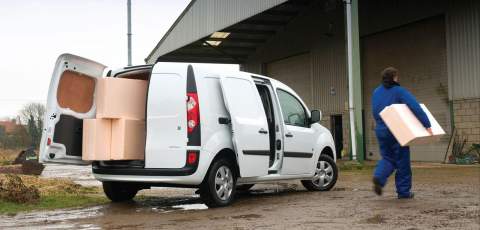


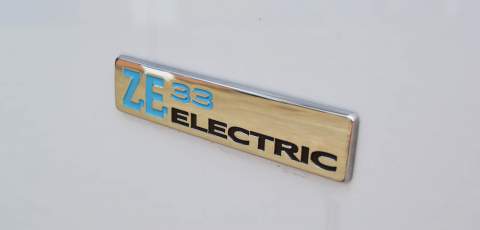
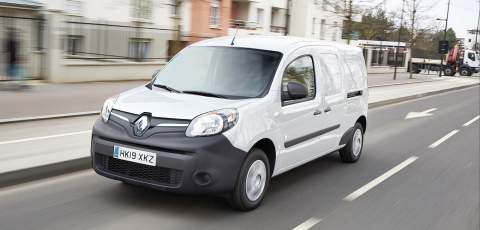
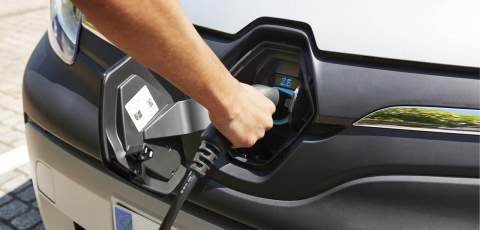
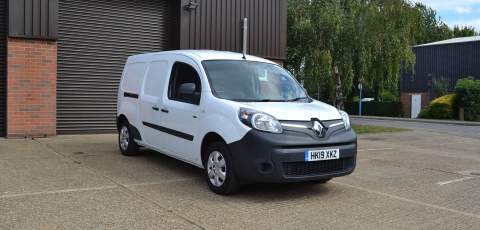
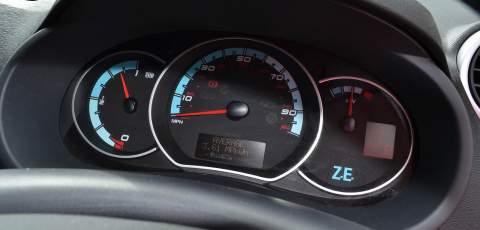
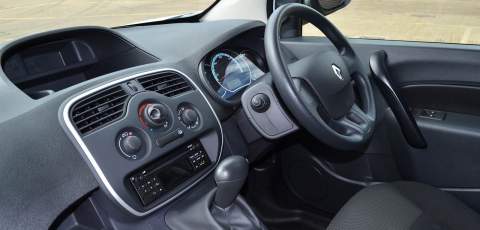
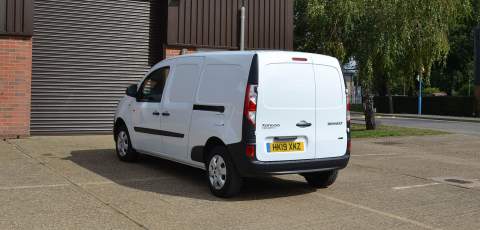
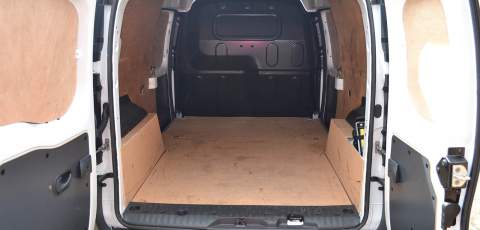
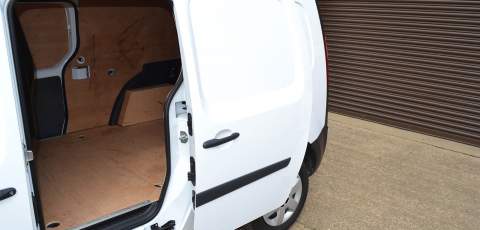
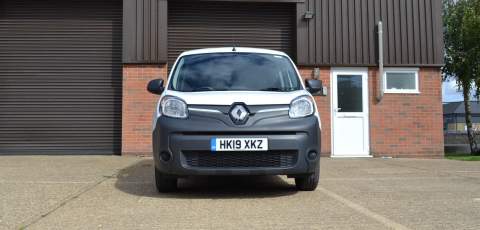

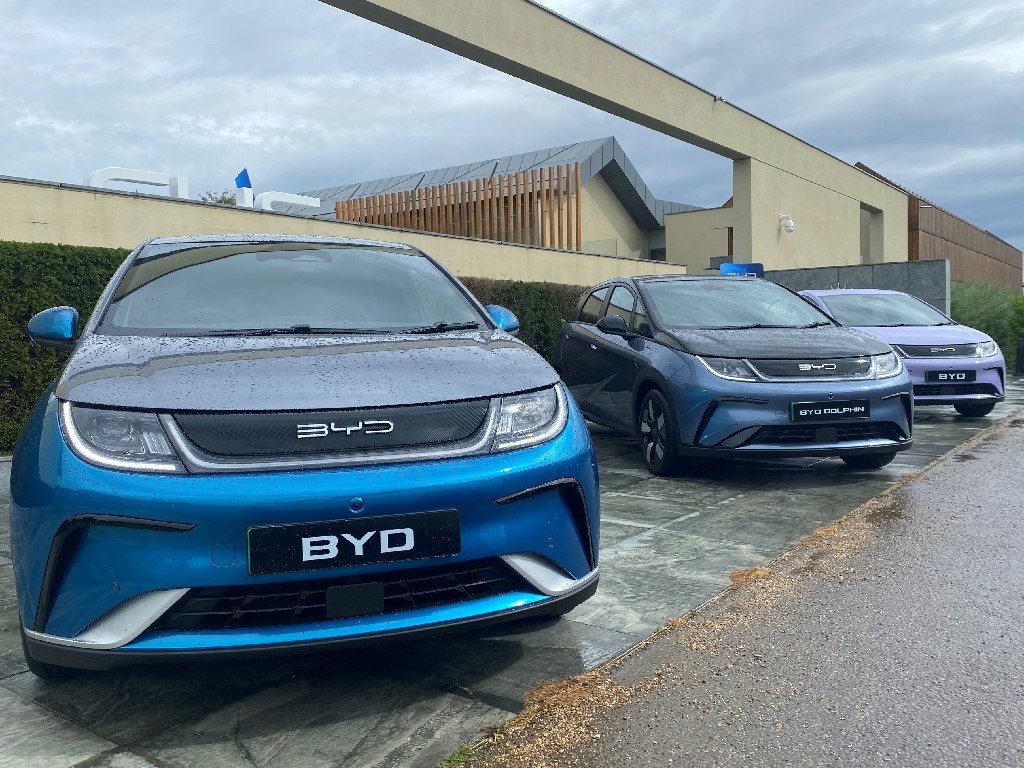
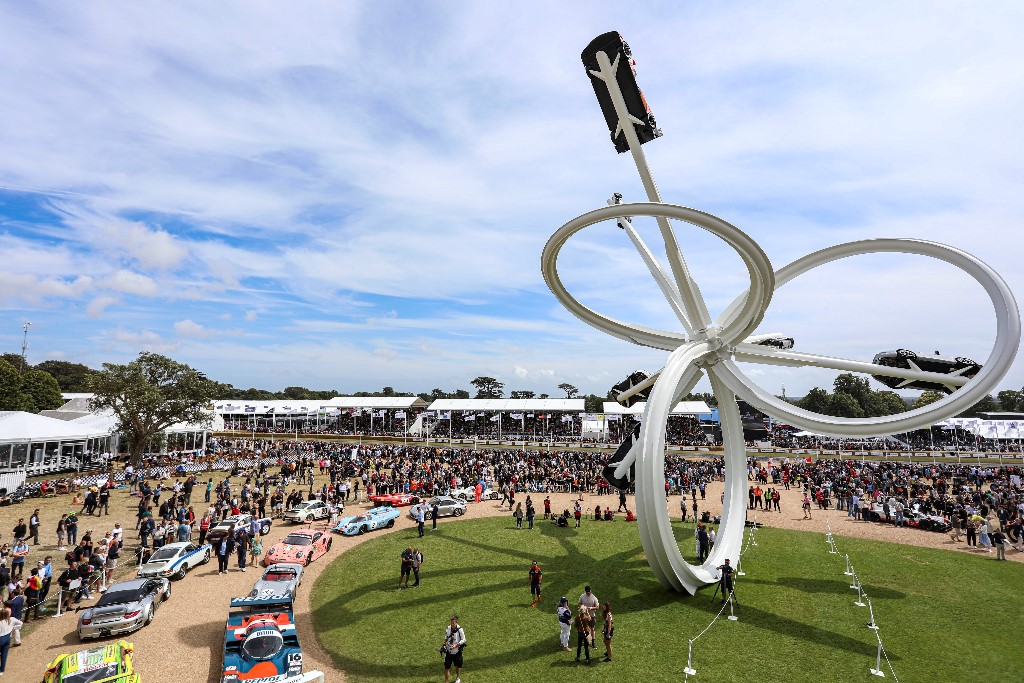
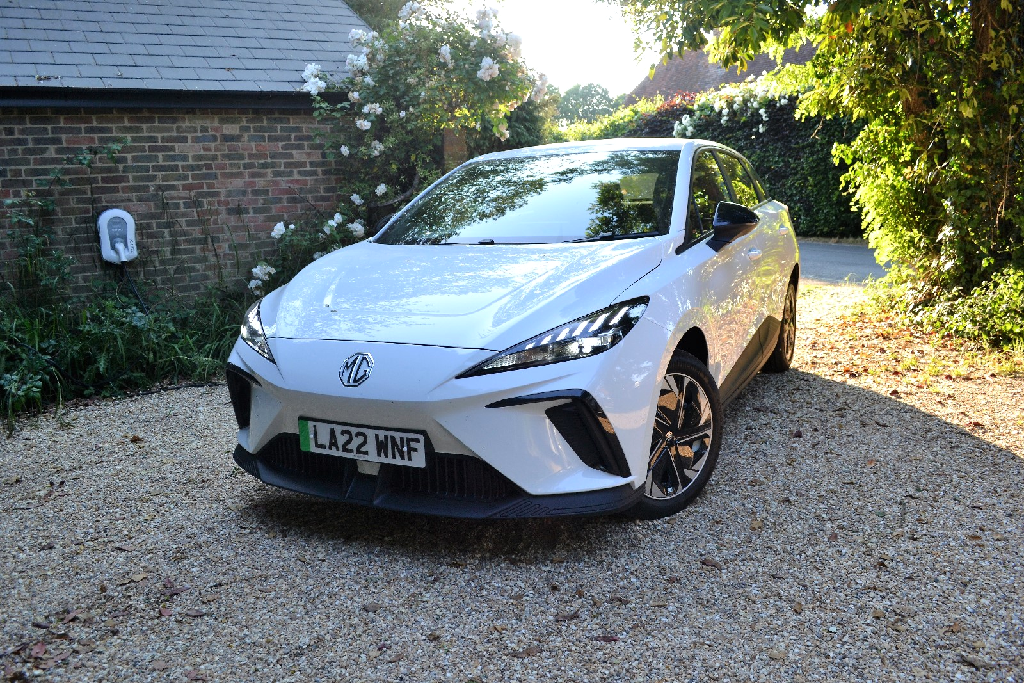
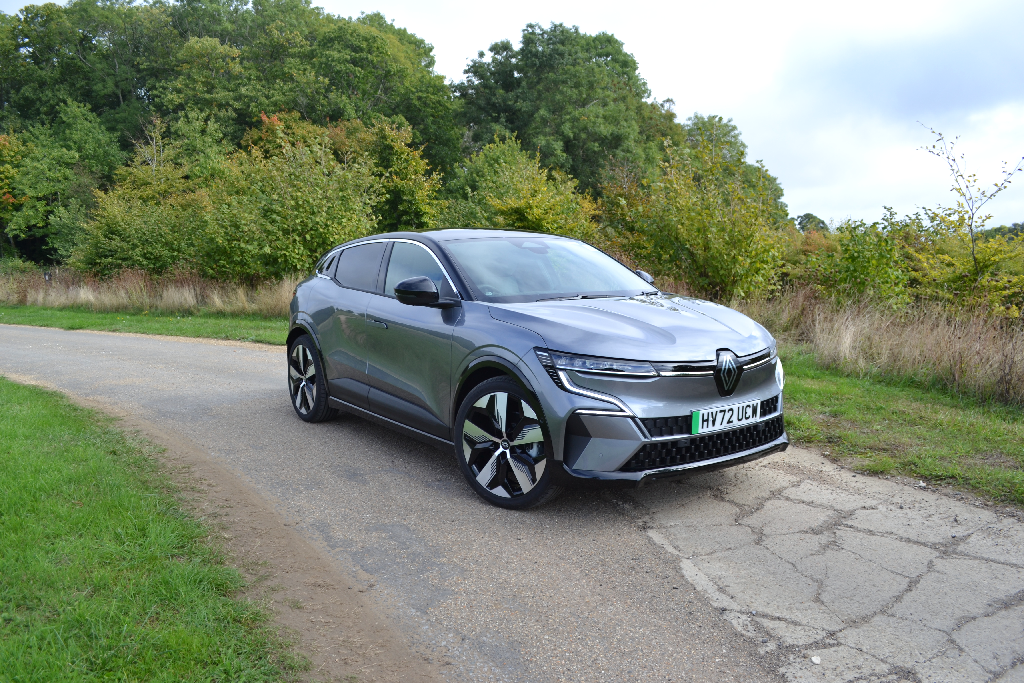
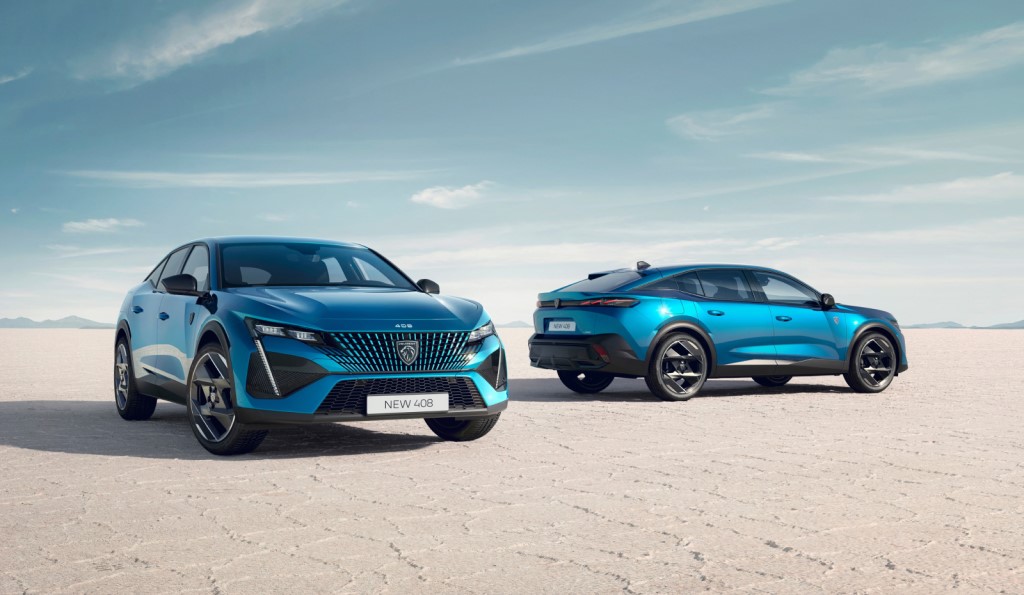
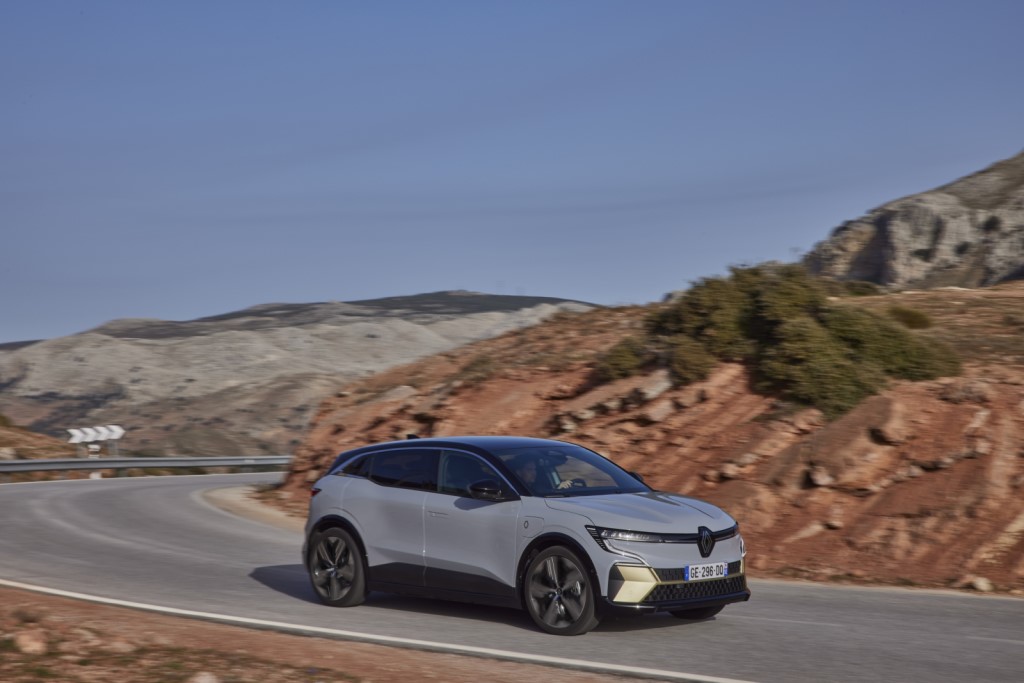

Comments (0)
Be the first to write a comment
Login/ Signup